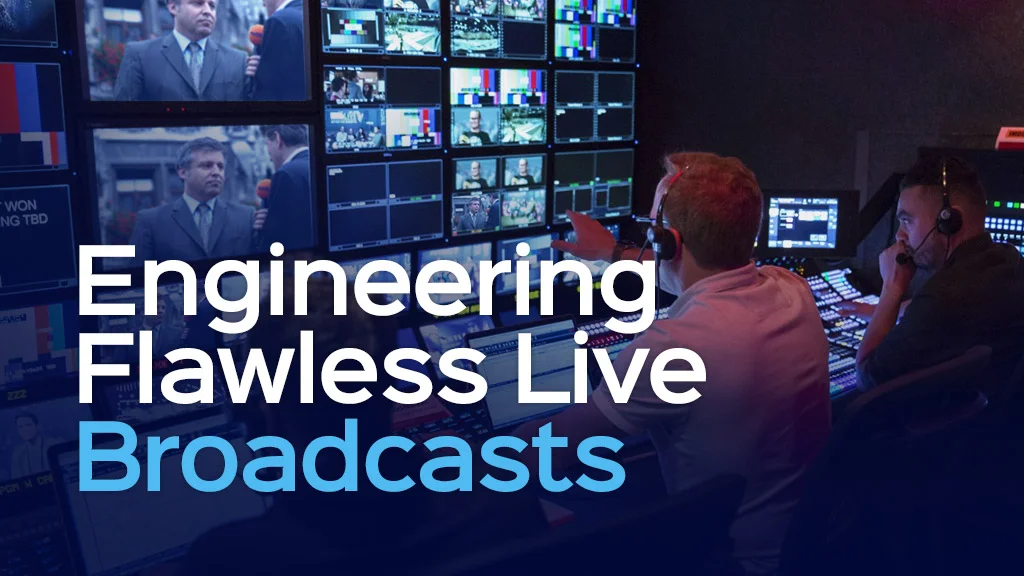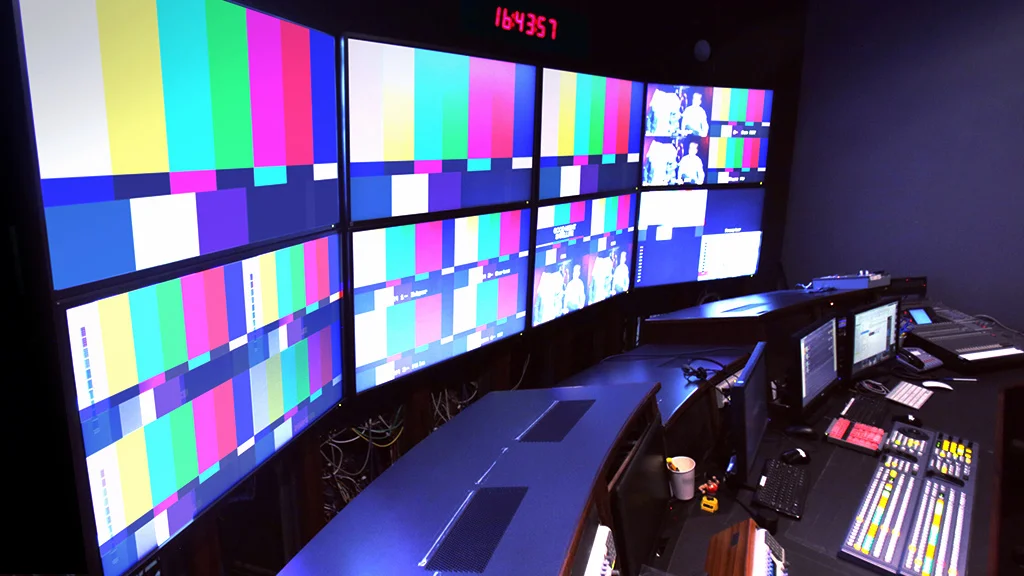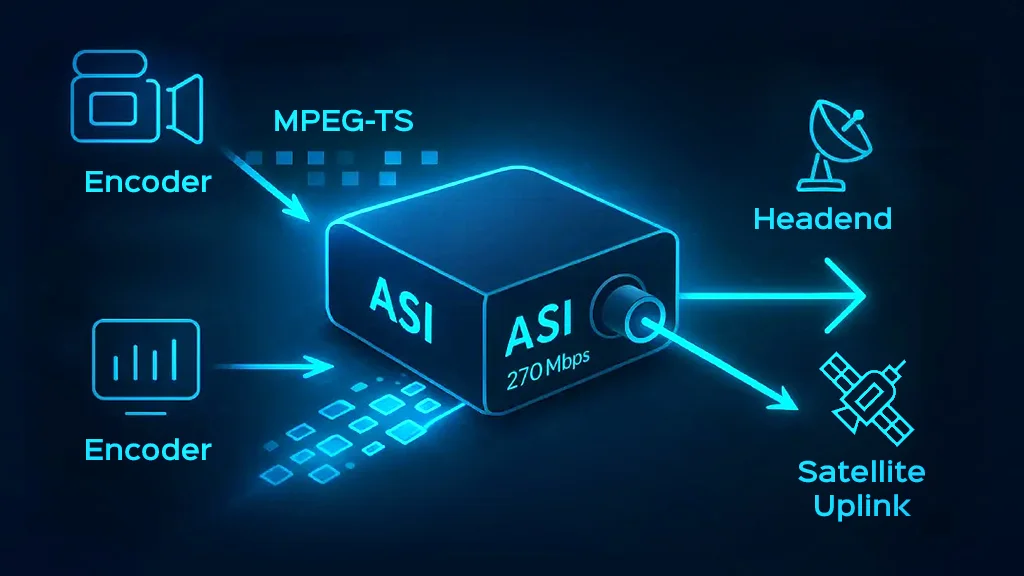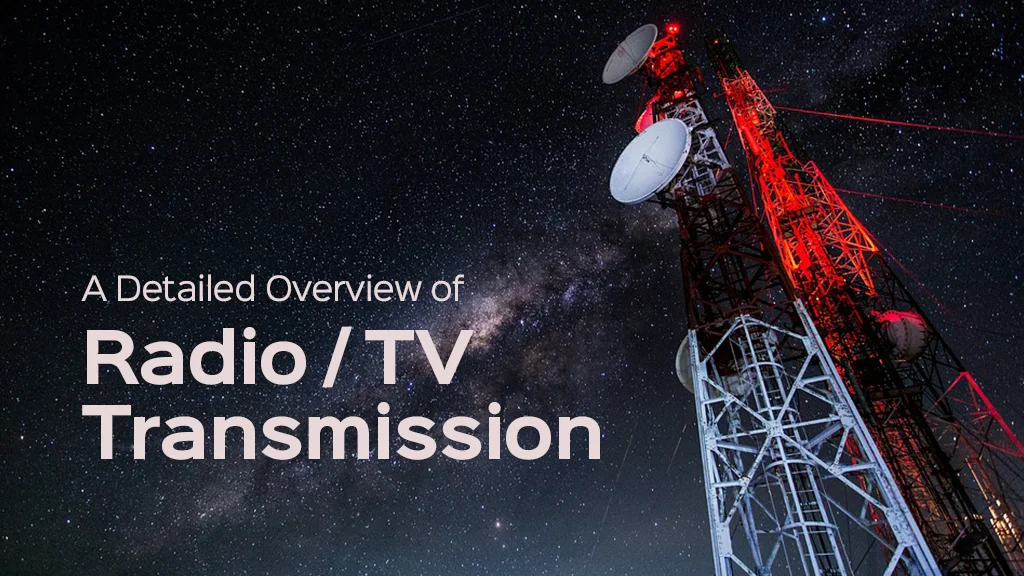
- Article
A Comparison of SDI and IP Broadcast Systems
The broadcasting landscape has undergone a profound transformation over the past few decades, driven by technological advancements and shifting viewer preferences. At the heart of this evolution is the transition from Serial Digital Interface (SDI) to Internet Protocol (IP) broadcasting. SDI, once the gold standard for transmitting high-quality video and audio signals in professional environments, has served the industry well. However, as the demand for flexibility, scalability, and cost-effectiveness grows, IP broadcasting emerges as a compelling alternative. This transition not only enhances production capabilities but also aligns with the broader shift toward digital and cloud-based solutions.
Transition to IP in broadcast signifies a major shift in how content is produced, distributed, and consumed. As technology continues to advance, the broadcasting industry must adapt to meet the challenges of a rapidly changing landscape while embracing the opportunities that come with it. The future of broadcasting is not just about technology; it’s about creating a more agile, efficient, and viewer-centric media ecosystem.
Explanation of SDI in broadcasting
The Serial Digital Interface (SDI) has been a fundamental technology in the broadcasting industry since its inception (Developed in the late 1980s and early 1990s). As a standard for transmitting uncompressed digital video and audio signals, SDI has facilitated high-quality broadcasting for decades, enabling seamless communication between cameras, switchers, and other production equipment.
In an era where video quality and reliability are paramount, understanding SDI’s capabilities, applications, and limitations is essential. As we examine SDI’s role, we can better appreciate the ongoing shift toward newer technologies like Internet Protocol (IP) broadcasting, which seeks to enhance flexibility and efficiency in media production and distribution.
Limitations of SDI in modern broadcasting environment
While Serial Digital Interface (SDI) has been a reliable standard for video transmission in broadcasting, several limitations have become more pronounced in today’s rapidly evolving media landscape. Here are some key challenges associated with SDI:
Infrastructure Requirements
Dedicated Cabling: SDI relies on coaxial cables, which can be cumbersome and expensive to install and maintain.
Specialized Hardware: The need for specific SDI-compatible devices adds complexity and cost to broadcasting setups.
Distance Limitations
Over long distances (typically beyond 100 meters), SDI signals can degrade without the use of repeaters or signal boosters, which can complicate large-scale productions. Also, this distance constraint limits the ability to adapt setups in dynamic environments, such as outdoor broadcasts.
Scalability Challenges
Complex Upgrades: Scaling SDI systems often requires significant investment in new hardware and infrastructure, making it less adaptable to changing needs.
Inflexibility in Multi-Format Environments: As media formats diversify, integrating various signal types can be cumbersome with SDI.
Cost Implications
High Initial Investment: The upfront costs associated with SDI equipment and installation can be prohibitive, especially for smaller broadcasters or startups.
Maintenance Costs: Ongoing maintenance and potential upgrades can add to the overall financial burden.
Limited Interoperability
Compatibility Issues: While SDI is standardized, integrating it with newer technologies, such as IP-based systems, can be challenging and may require additional converters or adapters.
Fragmented Ecosystem: Different versions of SDI broadcast (e.g., HD-SDI, 3G-SDI, 12G-SDI) can create confusion and compatibility issues in mixed-media environments.
Static Nature of Connections
Rigidity: SDI setups are typically static, making it difficult to adapt to changing production needs or workflows, particularly in live environments.
Limited Remote Capabilities: Unlike IP systems that can easily support remote production, SDI often requires physical presence, which can constrain operational flexibility.
Read also :
Understanding Serial Digital Interface (SDI) Video
Introduction to IP technology in broadcasting
Internet Protocol (IP) technology is revolutionizing the broadcasting industry, offering a transformative approach to how video and audio content is produced, transmitted, and consumed. As traditional methods, such as Serial Digital Interface (SDI), face limitations in flexibility and scalability, IP technology emerges as a robust alternative, leveraging existing network infrastructures to facilitate seamless communication and interoperability.
IP broadcasting technology enables the transmission of high-quality video and audio over standard internet protocols, making it possible to utilize cost-effective IT solutions and cloud-based services. This shift not only enhances production capabilities but also aligns with the growing demand for remote and flexible workflows in a rapidly changing media landscape. As the industry embraces this innovative approach, understanding the fundamentals of IP technology is essential for staying competitive in the evolving world of broadcasting.
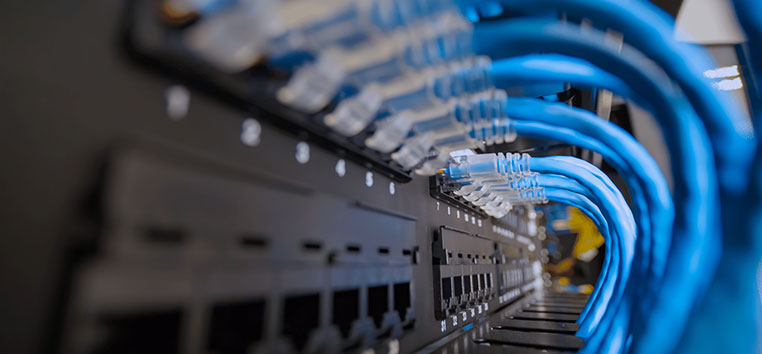
Key features of IP broadcasting
IP broadcasting technology has transformed the media landscape by introducing a range of features that enhance flexibility, efficiency, and scalability. Here are the key features that define IP broadcasting:
1. Flexibility and Scalability
Dynamic Scaling: IP systems can easily scale up or down based on demand, allowing broadcasters to adjust resources as needed without significant hardware changes.
Modular Architecture: Components can be added or removed without disrupting the entire system, making it adaptable to evolving production requirements.
2. Cost-Effectiveness
Utilization of Existing Infrastructure: IP broadcasting leverages standard IT networks, reducing the need for specialized cabling and equipment.
Lower Operational Costs: By minimizing the reliance on proprietary hardware, broadcasters can significantly cut down on initial and ongoing expenses.
3. Remote Production Capabilities
Cloud-Based Solutions: IP technology supports cloud services, enabling remote production and collaboration from various locations, which is especially valuable for live events and global teams.
Access Anywhere: Teams can access content and systems from any location with internet connectivity, enhancing workflow efficiency.
4. Interoperability
Standardized Protocols: IP broadcasting technology adheres to widely accepted standards such as SMPTE 2110 and RTP, ensuring compatibility across various devices and platforms.
Integration with Other Systems: IP technology allows for seamless integration with IT systems, storage solutions, and various media formats.
5. High-Quality Transmission
Uncompressed Video: IP can support high-quality, uncompressed video and audio transmission, maintaining broadcast standards.
Advanced Compression Technologies: Utilizes modern codecs like HEVC and AV1 for efficient streaming without compromising quality.
6. Real-Time Data Transmission
Low Latency: IP systems can be optimized for low-latency transmission, which is crucial for live broadcasting scenarios.
Synchronization: Advanced time-sensitive networking ensures that audio and video streams remain synchronized during transmission.
7. Enhanced Monitoring and Management
Network Monitoring: IP broadcasting technology allows for real-time monitoring of network health and performance, facilitating proactive management of issues.
Data Analytics: Collecting and analyzing data on viewer engagement and system performance can inform content strategies and operational improvements.
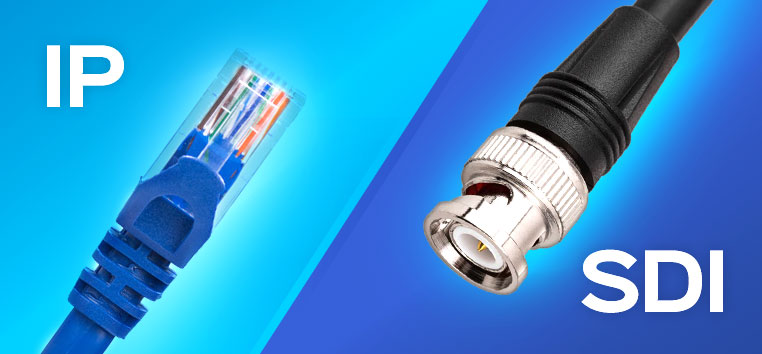
SDI vs IP Broadcasting
The broadcasting industry is undergoing a significant transformation, driven by technological advancements and evolving audience expectations. At the forefront of this change is the debate between Serial Digital Interface (SDI) and Internet Protocol (IP) broadcasting. In fact, SDI vs IP Broadcasting has always been a challenging issue.
SDI has long been the backbone of professional broadcasting, providing a reliable method for transmitting high-quality video and audio signals. However, as demand for flexibility, scalability, and cost-effectiveness increases, IP broadcasting technology has emerged as a compelling alternative. Leveraging existing IT infrastructures, IP technology offers new possibilities for remote production, integration, and adaptability in a rapidly changing media landscape. In summary, while SDI has been a reliable standard for high-quality broadcasting, its limitations in flexibility, scalability, and cost are driving the industry toward IP broadcasting. IP technology provides a more adaptable, efficient, and cost-effective solution, enabling broadcasters to meet the demands of a rapidly changing media environment. As the industry continues to evolve, understanding the differences between SDI and IP will be crucial for making informed decisions about broadcasting infrastructure and technology.
Why should broadcasters prefer IP Technology over SDI?
The advantages of IP technology over SDI—such as flexibility, cost-effectiveness, remote capabilities, and interoperability—make it an increasingly attractive option for broadcasters. In fact, embracing IP technology not only enhances operational efficiency but also prepares broadcasters for the future of media live TV production and distribution.
Is IP always better than SDI Broadcasting?
In summary, while IP broadcasting presents numerous benefits—such as flexibility, cost savings, and remote capabilities—it is not inherently better than SDI in every situation. The decision between IP and SDI should be based on the specific needs of the broadcasting operation, including factors like latency requirements, existing infrastructure, budget constraints, and the technical expertise available. Ultimately, a hybrid approach that combines the strengths of both technologies may often be the most effective solution.


